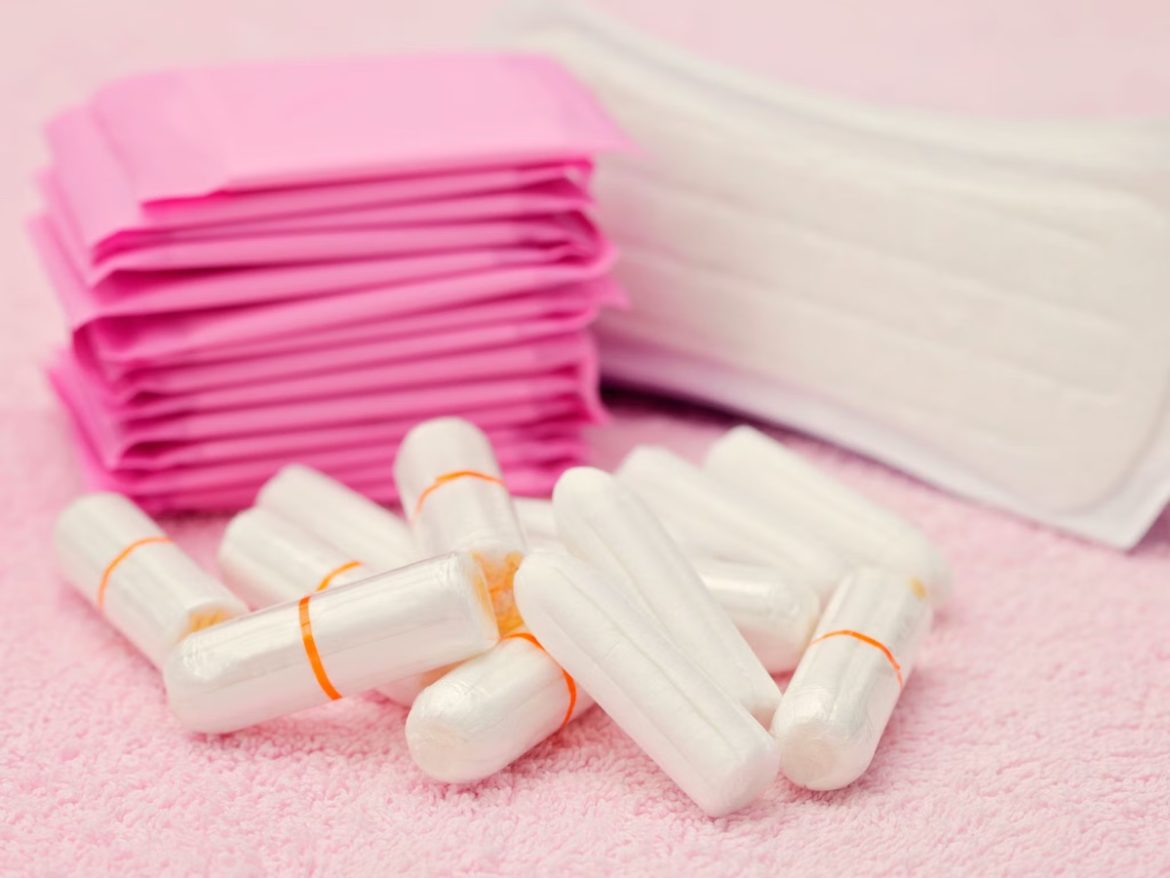Let’s not beat about the bush; shame, stigma and silence have dominated the topic of periods under a very successful campaign (read patriarchy), whereby menstruators have kept schtum and sucked it up. But time is called… Hundreds of millions of people in the world menstruate and have done since the start of us. Yet period products have barely advanced beyond the first consumer tampons nearly 100 years ago. In the noughties Tampax and Always advertised, but it was always pretty subtle, ‘sensitive’ language used around the straightforward matter of periods, so as not to offend or embarrass (guess who…). 2015 saw Rupi Kaur’s period Instagram posts make waves (and ground, as her censored photographs featuring period blood, exploring the taboo around menstruation, were reinstated). In 2020 I saw a London bus featuring DAME’s campaign ‘Bleed Red, Think Green’ written large, alongside the image of a woman in knickers showing her tampon string. In 2021 ‘tampon tax’ was scrapped (and about f***ing time). As of 2023, Spain gives the right to three days of menstrual leave a month (though Japan has been doing so for 70-odd years, as have several other Asian countries).
Women’s Environmental Network report that most women and people who menstruate will do so for an average of 38 years, having approximately 500 periods in their lifetime. Each period can cost up to £41 – that’s £492 per year, more than £18k over all. Sweet… In the UK alone, there are around 18 million of menstruating age. 10% of 14 to 21-year-olds (according to Plan International UK) can’t afford menstrual products (seriously?!).
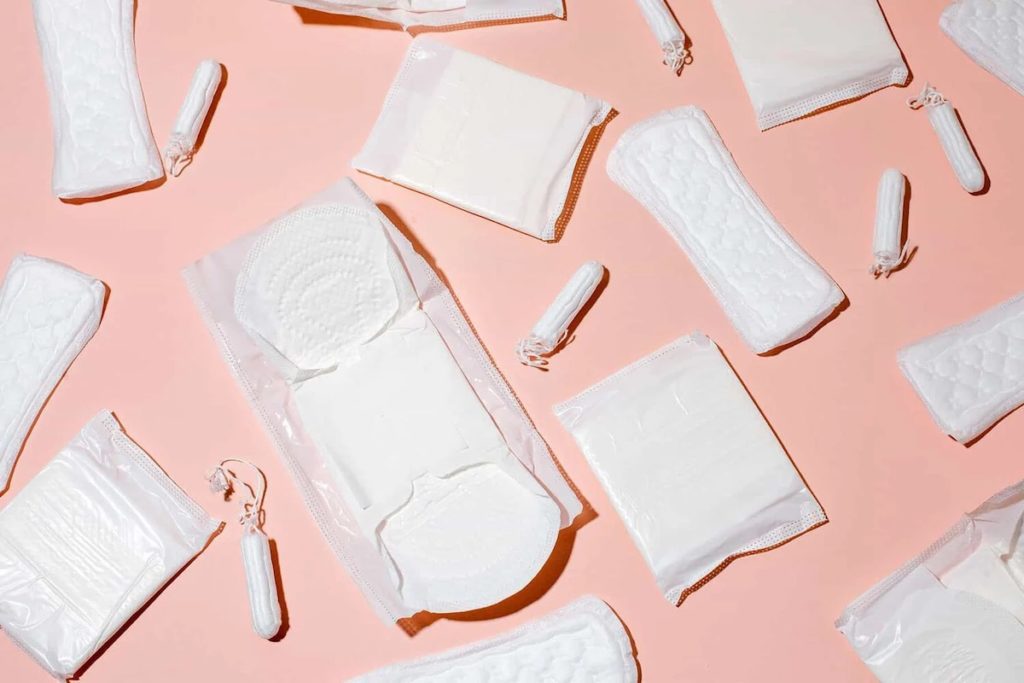
Now, this isn’t an article of stats, or on normalising menstruation, or even about period poverty (though a little info on the topic can only help, and it puts pay to the pitiful provisions and education re periods). What it is about are the companies out there creating products that’ll hopefully make those few days a month more bearable, whilst funding initiatives and education around menstrual health.
What they’re also working towards is giving greener alternatives to frankly outdated products, considering the disposal of single use menstrual products – tampons, pads and applicators – generate 200,000 tonnes of waste per year. Now, what women do not need is environmenstrual shaming on the impact of their periods. They’re hard enough. (And have we not just been working with what we’re given, with no alternatives, whilst muddling through our periods independently?) No one needs a lecture on how to reduce their environmental impact when it comes to period products. From anyone. Seriously. Ever. Perhaps it’s because I’m writing this as I actively shed my uterus, but the next person who starts – and I’ve had several men broach the subject with me, thinking themselves ever-so woke – I will high kick (wearing my new Modibodi x Puma shorts – read on…). Except perhaps the creators who have better alternatives. So here are brands doing the legwork for more comfortable periods whilst keeping environmental impact in the forefront.
Starting with my top pick…
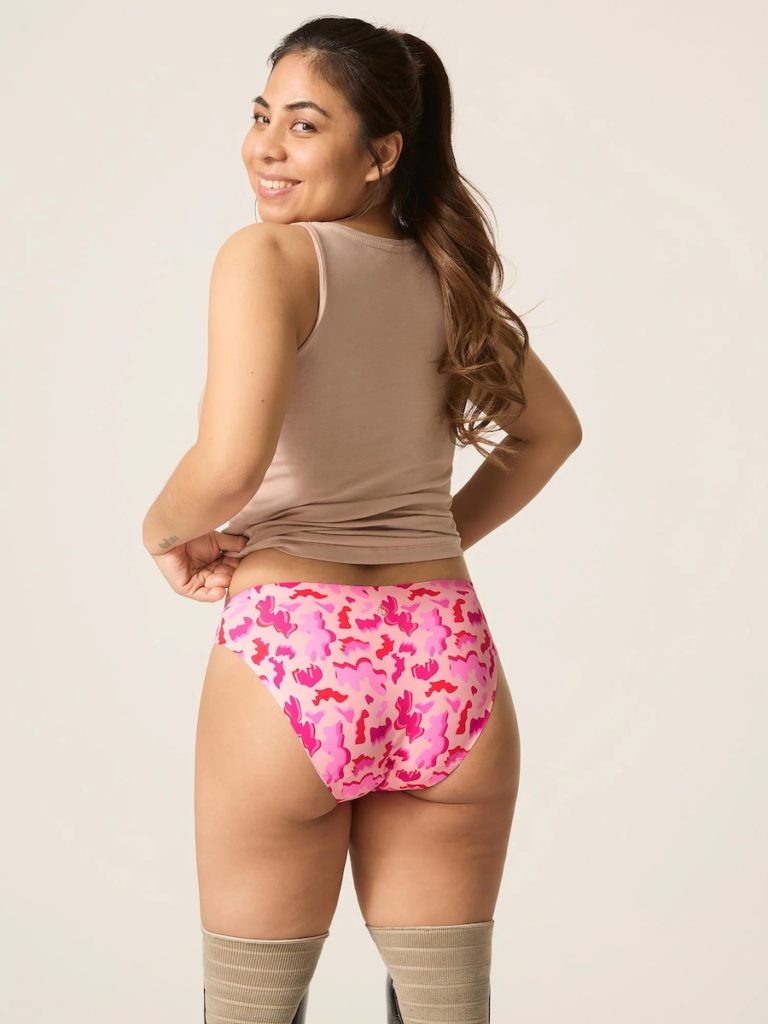
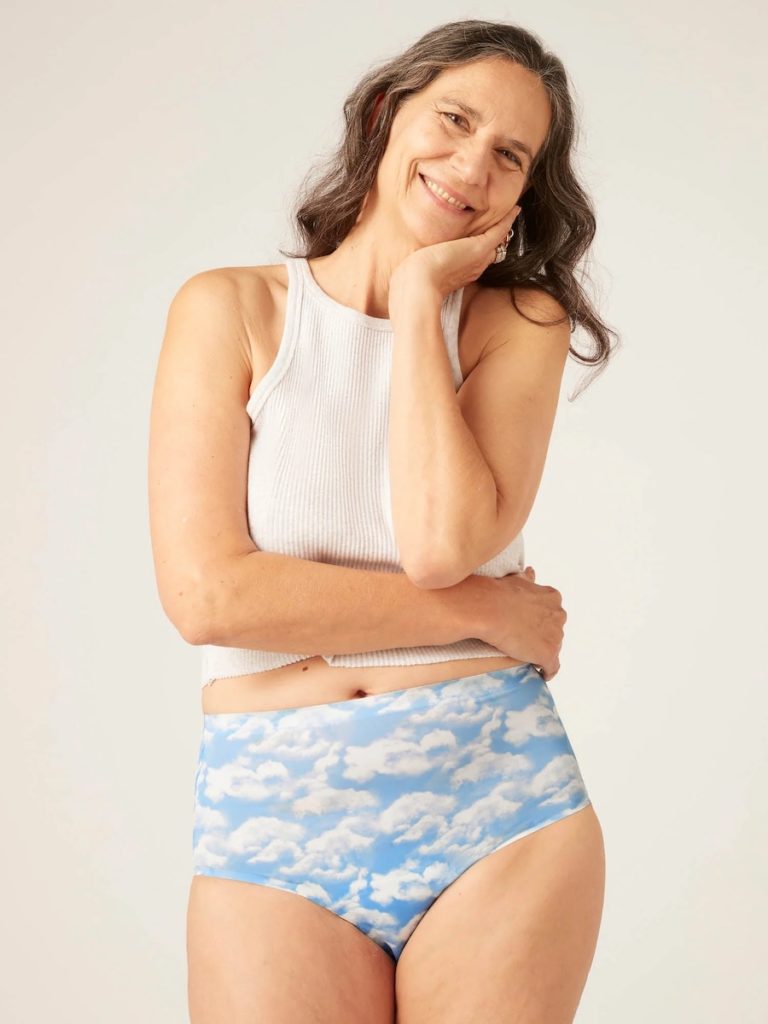
Modibodi Underwear
Simple, period-proof underwear that are reusable, comfortable and 100% reliable. These have nothing short of transformed my sleep when on my period. Usually nights are spent tossing and turning in discomfort, worrying about pads moving and sheets being ruined. I’ve used these for three months now, with no issues – i.e. leaking. No more towels down at night, no more enormous night pads that feel more like nappies, and no waking up hot, bothered, all out of place.
Modibodi started as a bladder incontinence brand, founded by mum-of-four Kristy Chong who came up with the Modibodi concept while training for a marathon. Ten years on and Modibodi covers you for blood, sweat and wees, the period-, pee- and perspiration proof undies proving a mega hit since they entered the UK market in 2018. They fit, and look, like regular knickers – at least the classic bikini briefs (light-to-moderate absorbency) I use do, and there’s no VPL beyond a normal brief line. The padded gusset is slightly longer than in normal knickers, but shorter (and infinitely more comfortable) than a regular sanitary towel (and perfectly placed). The built-in pad is slim – 3mm – ultra absorbent, stain and odour resistant and, best of all, breathable.
They come in three absorbencies: light-moderate, moderate-heavy, heavy-overnight. I have also worn these most days of my period, they’re so damn trusty. Modibodi runs its Give a Pair initiative, so when you buy, you benefit the planet, a person in need and yourself.
Pro: Comfortable, reassuring, high performance.
Con: They don’t wash best. I mean, they’re easy to wash and stay super soft and effective, but the outside layer bobbles a little, perhaps as the cotton is so soft.
£18.50 – £22 from Modibodi
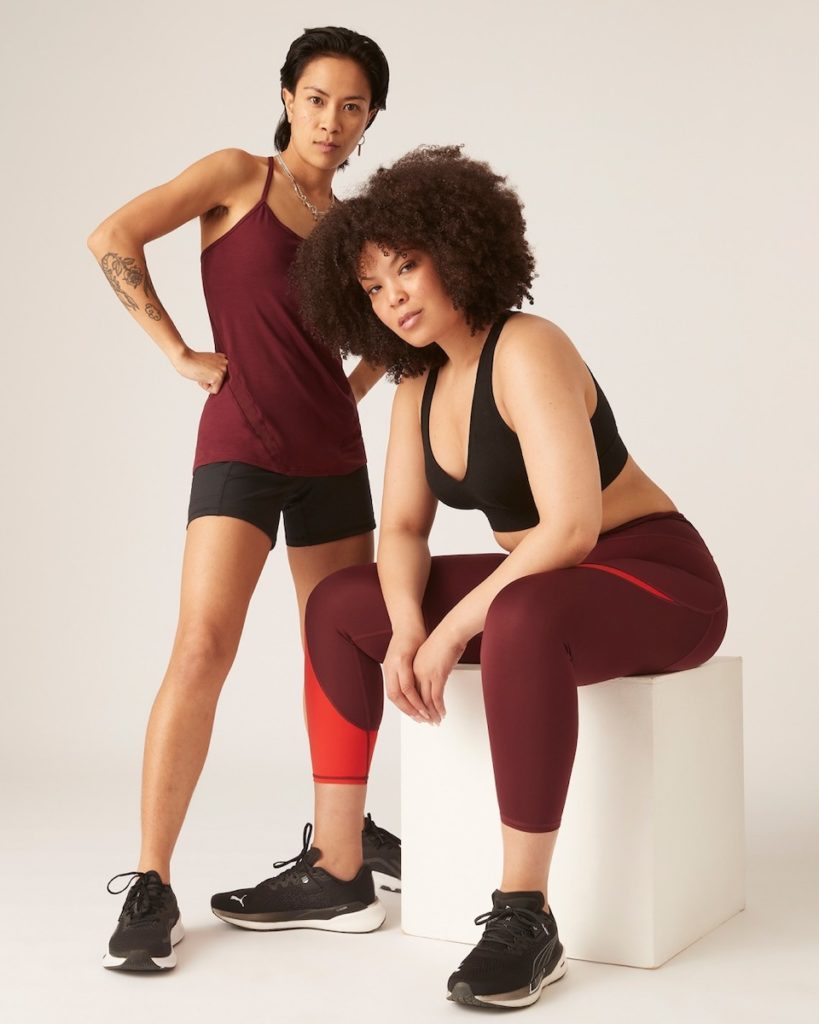
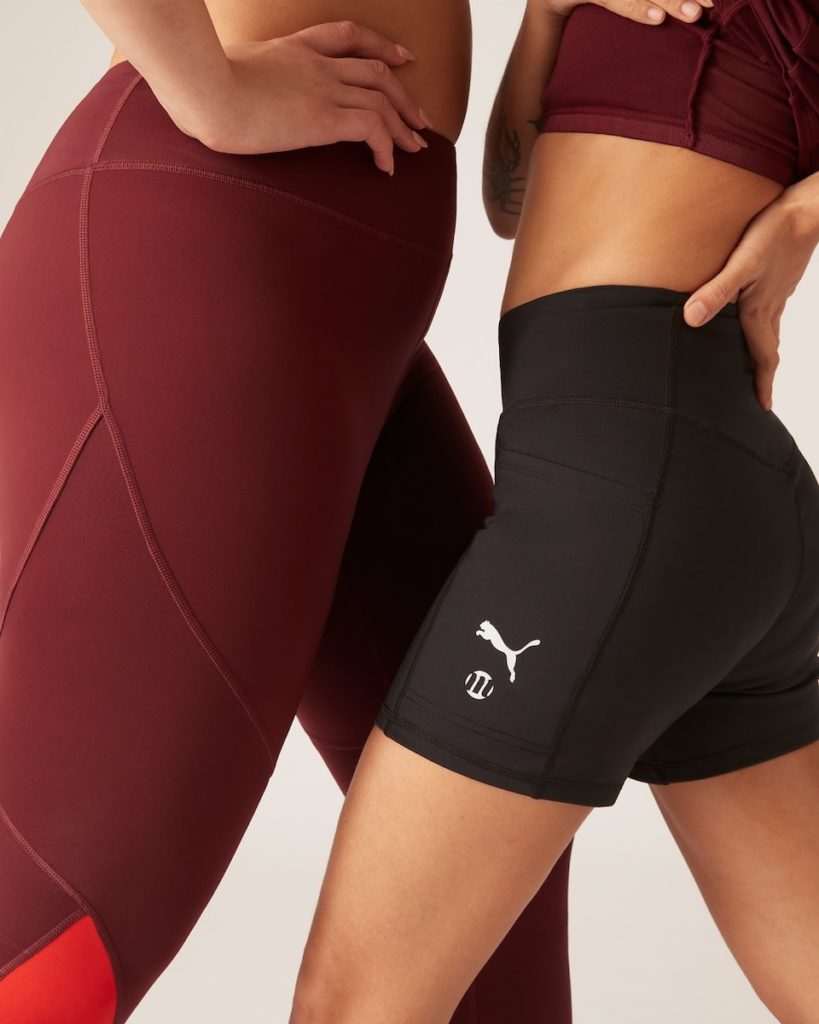
Modibodi Leggings
Second place is owned also by Modibodi. Cute, dusty black, period-proof leggings that you wouldn’t know were… Whilst you can feel the pad, you can’t see it. Not even in a deep squat. Every time I put them on I test again, in front of a mirror, but I’m safe and there’s no noticeable outline. The most you get is what looks like a pants VPL.
I put these leggings to the ultimate test and wore them to yoga, where it’s all about the flow, contorting myself into so many positions, legs akimbo, where so much could go wrong. Long-short, I was safe, and you can 100% wear these leggings with no other period protection. What I did find a little distracting to my yogi focus is getting used to the feeling of ‘free bleeding’, being a lifelong tampon user. The panic and urge to run to the bathroom, whilst squeezing thighs together, even if you’re safe is hard to shift.
One thing I keep thinking is how much these would transform the early years of periods and how much young women, before they use tampons, say, would benefit from period-proof sportswear. Working out in sanitary towels is not fun – hot, uncomfortable, restricting what you can do, or just want to do, in fear of something going wrong. Perhaps with it would go a great excuse, but so many gym classes were missed due to period paranoia.
I thought the sizing was generous, when I first tried these on. Then came my period, and with it bloat, and I remembered how awful regular clothes feel too tight on the tum. So Modibodi obviously has this right. Again…
£55 from Modibodi
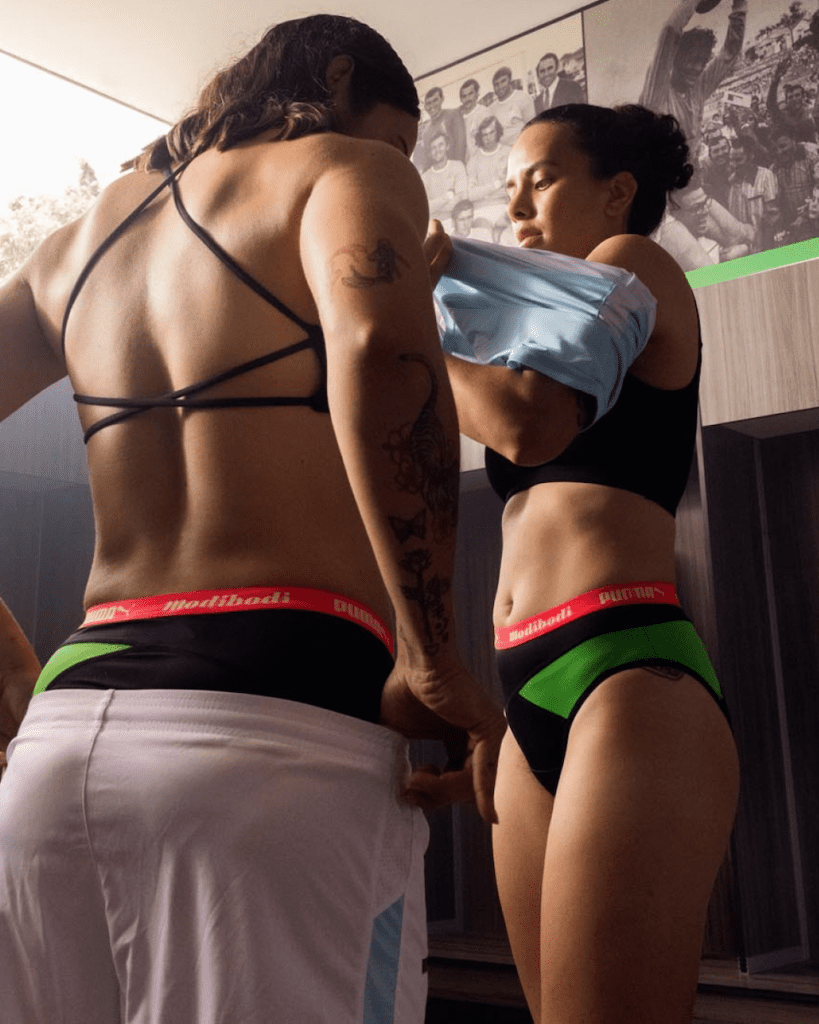
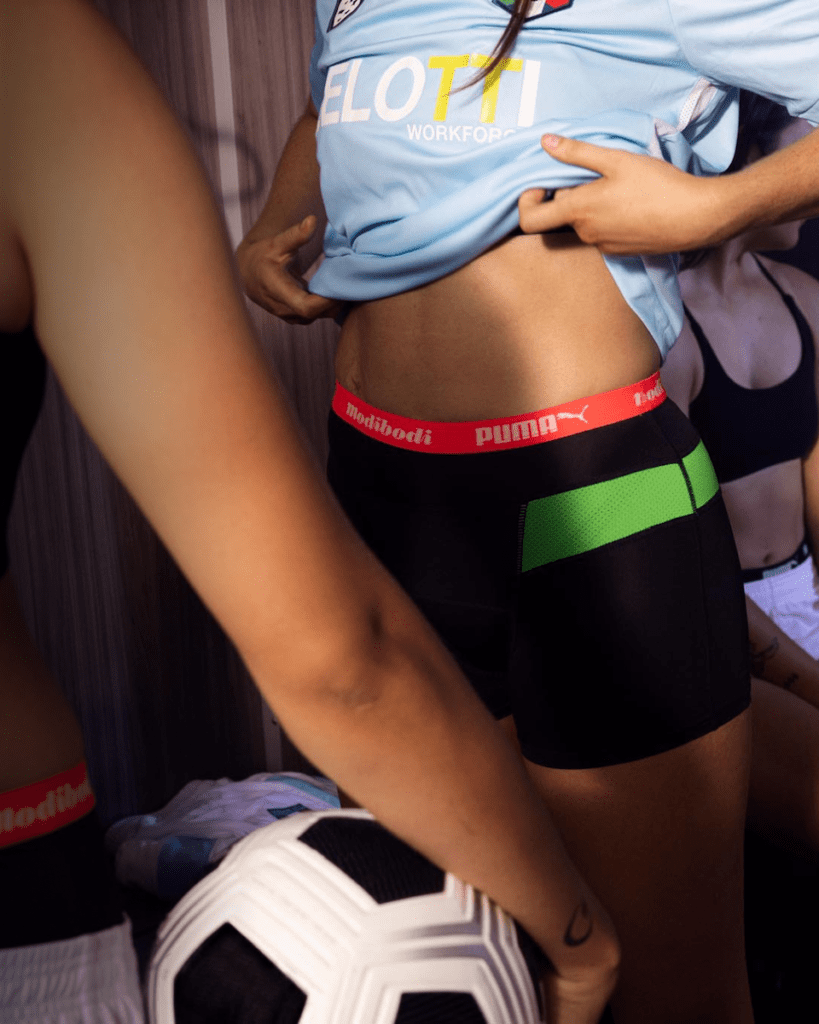
Modibodi x Puma Shorts
Modibodi and Puma have done a collab, and the result is a range period proof activewear. I have the Recycled Active Cycle Short (moderate-heavy absorbency in black). Checking the reviews online, I’m just one in a clean-sweep of 5* reviews. These feel more like pro sports cycling shorts – which I find incredibly comfortable and supportive any day – but are nowhere near as bulky and obviously just have the main pad.
I do wear them under running shorts. The pad is more obvious in the shorts than the leggings, though really it just looks like a strong VPL. I took these shorts for a spin at a kickboxing gym, the serious, stinking, men-heavy kind where you really don’t want to be worrying about your period. As backup, I wore a tampon, though there was really no need, the shorts being much tighter fitting and more performance-focussed than the leggings (though a good option for anyone worried, and I know many people double-up tampons and pads just in case…). Next time I won’t, though.
The Modibodi X Puma cycling shorts are short shorts, which help them fit tight and feel secure, and come with side pockets and a black inner lining. Moisture-wicking treatment helps sweat to dry, and it’s made from a mix of recycled and natural materials that are odour resistant. 10/10 for these.
Pro: Fuss-free. Get ready and go…
Con: The Modibodi leggings have a large waistband that reads Modibodi. A tiny part of me doesn’t want people to know it’s period workout wear/that I’m menstruating. But, most won’t know the brand, and if they do it’s because they’re lucky enough to have stumbled across it, and are almost certainly going to be female. I also think, admitting this, that why the heck does it matter if people know if I’m on my period or not, as I acknowledge/battle my own ingrained, internal misogyny.
£48 from Modibodi
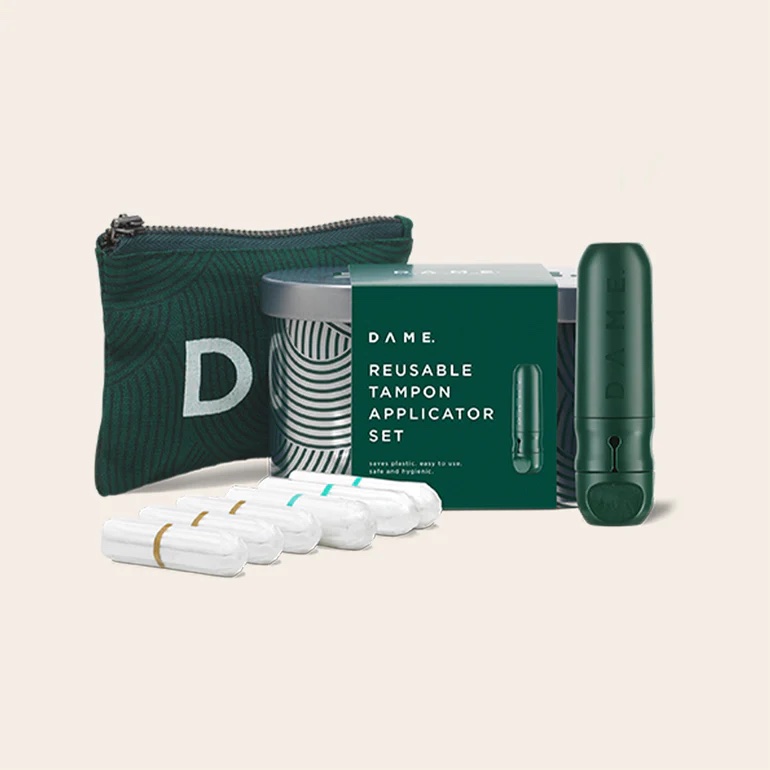
DAME Applicator
If I’m to rank my preference of tampons, I’d choose plastic applicator, then cardboard, then no applicator. While non-applicator tampons are obviously the best for the environment, take up less room in your bag/pocket, and are the cheapest option, I find them harder to use and get into the right position, and they don’t seem to work as well re leakage (probably because of the first reason I list). That, and inserting a dry and absorbent-by-job tampon without any slide-able/lubey casing, I find pretty uncomfortable. Enter the DAME applicator ‘the world’s first reusable tampon applicator’, which is some claim, seeing as women have been bleeding and soaking up periods since forever and there’s got to be a predecessor, but also who cares because this is a sound product.
The upfront cost is a lot (£31). But when you compare a box of plastic applicator tampons, and the fact that it’s projected to last 3,000 uses, it comes out cheaper. You can load up any tampon size, from lite to super plus. A lifelong (applicator) tampon user – I found transitioning to this new product the easiest. It’s fuss free, and I find it very satisfying to only carry around the tiny purse it comes with – the size of a credit card – stuffed tiny applicator-free tampons to carry to the bathroom whenever needed, rather than the rustling, large, brightly coloured regulars.
Pro: Simple. Functional. Space saving. Works better than disposable applicators.
Con: As it’s reusable, the plastic opening of the applicator (the inserted end) has to be more durable and so is slightly more rigid than a disposable. And you can feel the scratch of the opening ever so slightly.
£30.99 applicator set, with tin, travel wallet, x6 organic tampons from DAME
See more suggestions in Part Two of this feature.

